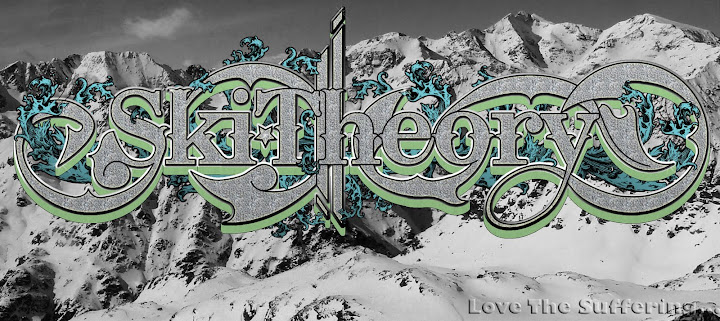Photo Right: Ty Petrusic & Matt Francis Packing For An Expedition (HEAVY)
Let's start with your feet. This is the most important spot to shave weight. If you you take 1 pound of weight off your feet, it is equivalent to taking 5 pounds off your back, which is easily a quarter of the weight of a heavier day pack. This extra strain works the core muscles into fatigue faster, and impedes their ability to properly support all your limbs, slowing you down and making you tired. Now since you are zig zagging up a mountain, rather than hammering straight up, you take approximately 6 strides to gain around 1 meter of elevation gain. If you are wearing a nice light pair of boots, say approx 1 kilo, that equipment is being moved 6000 times per 1000m of elevation gain. That's 6 tons of weight your body is moving on the ascent. See where I am going with this? Light skis, bindings, boots, and skins although expensive, are worth the investment.
Stano Faban's analysis on vertical speed seen here, we can see that because uphill runners have less weight on their feet, as a result their overall vertical speed is faster. There are quite a few other contributing factors to this, such as skin track angle, snow conditions, stride frequency/cadence, and sole stiffness, etc. The overall effect is the lighter you are, the better.
Most race poles weigh around 130 grams. Moving these sticks up and down over a 1000m climb is approx 390 kilos, estimating we move each side 3 times per 1 meter of elevation gain. How heavy are your poles?
 Packs are another issue, and one which we concentrate a lot of our gram shaving on, due to the diverse amount of gear we bring with us. A recent study found packs that weighed 5.4kg caused an increase of oxygen uptake of 620ml/min (1.5% VO²Max). With an increased load of 10.4kg, the oxygen uptake level was increased to 740ml/min (4.8% VO²Max). Oxygen uptake in ski mountaineering racing is incredibly important, limiting the bodies ability to draw oxygen at its optimal rate, reduces speed and causes the racer to reach their lactic threshold faster. This study also showed that heart rate was significantly reduced while even just standing. With any load, the heart rate jumped up 9 beats per min, and slowly increased with added weight. Adding injury to insult, the Trapezius muscle saw an increase in the force the backpack had on it, seeing an increase in the percentage of Maximal Voluntary Contraction (MVC) as loads became heavier.
Packs are another issue, and one which we concentrate a lot of our gram shaving on, due to the diverse amount of gear we bring with us. A recent study found packs that weighed 5.4kg caused an increase of oxygen uptake of 620ml/min (1.5% VO²Max). With an increased load of 10.4kg, the oxygen uptake level was increased to 740ml/min (4.8% VO²Max). Oxygen uptake in ski mountaineering racing is incredibly important, limiting the bodies ability to draw oxygen at its optimal rate, reduces speed and causes the racer to reach their lactic threshold faster. This study also showed that heart rate was significantly reduced while even just standing. With any load, the heart rate jumped up 9 beats per min, and slowly increased with added weight. Adding injury to insult, the Trapezius muscle saw an increase in the force the backpack had on it, seeing an increase in the percentage of Maximal Voluntary Contraction (MVC) as loads became heavier.Photo Above: Jeff Van Driel hauling a heavy pack on the Garibaldi Park Traverse.
In the scientific sports testing community it is thought that static muscle contractions should be around 5% MVC to avoid fatigue after 1 hour. Simply standing with a load, would allow an athlete to maintain that 5% MVC, however, moving with loads quickly adds more force to the body and surpasses the 5% MVC limit desired.
The chart to the left, describes the metabolic limit each sex and age limit has on carrying weight before affecting endurance. Please not that it includes, pack, clothing, gear, boots, etc. Note: study based on 60-70kg weight range.
The goal is simply to go as light as possible in the end, without forgoing any safety or rescue equipment. The more weight you shave, the longer, the faster you can go as a direct result of better oxygen uptake, increased endurance, and better recovery. Weigh everything, compromise nothing, train for more weight than you expect to carry.








Even that we all know this once it is discussed in a more scientific angle it is interesting stuff.
ReplyDeleteI remember my group's first traverse - man those packs were heavy. Now they are not the lightest they could be, however, we are able to climb some serious verts every day.
If we would to drop cheese and couple of sausages we would be flying but just as Alex said "...compromise nothing..." :)
Hello mate great blog.
ReplyDelete